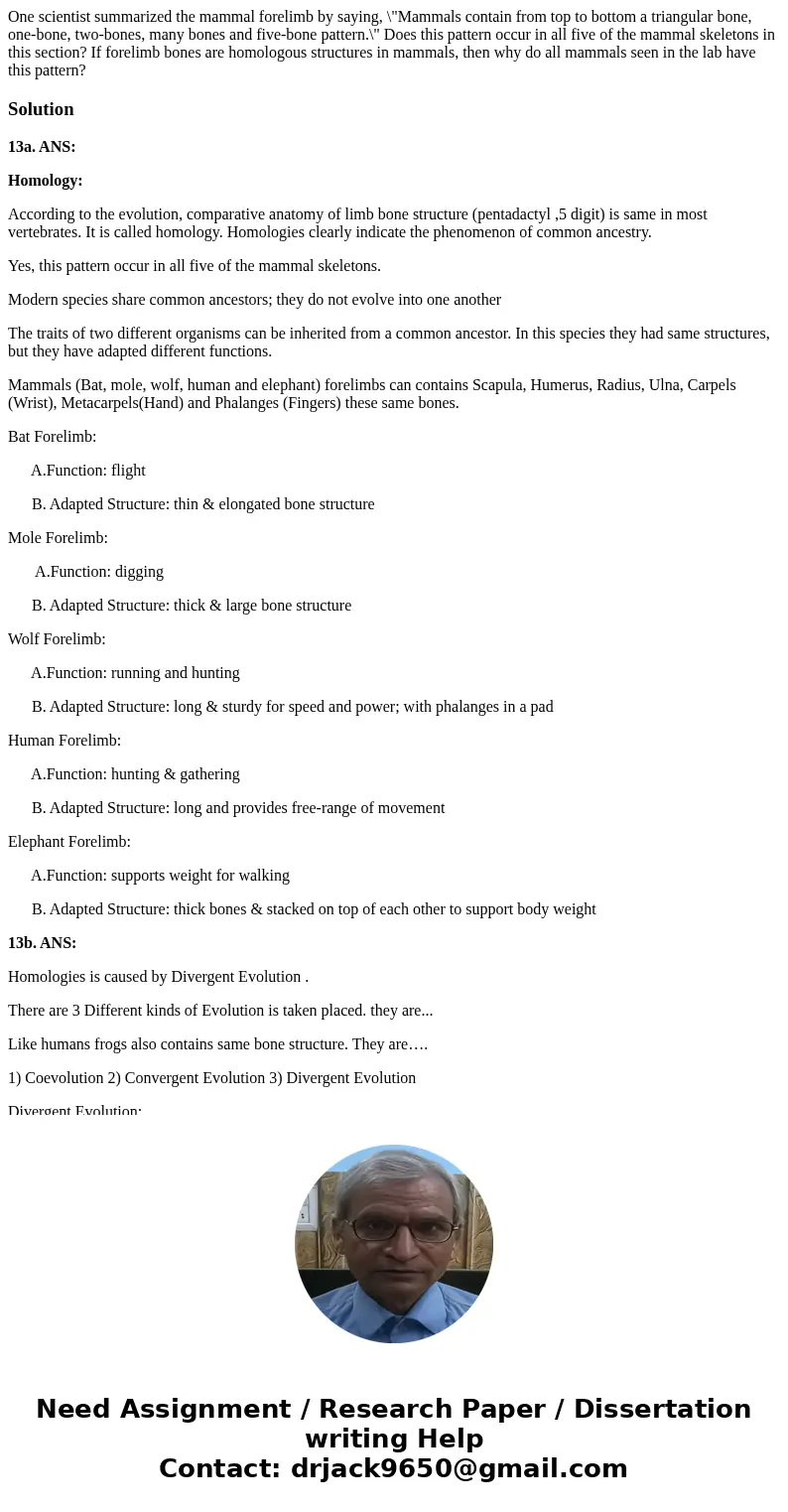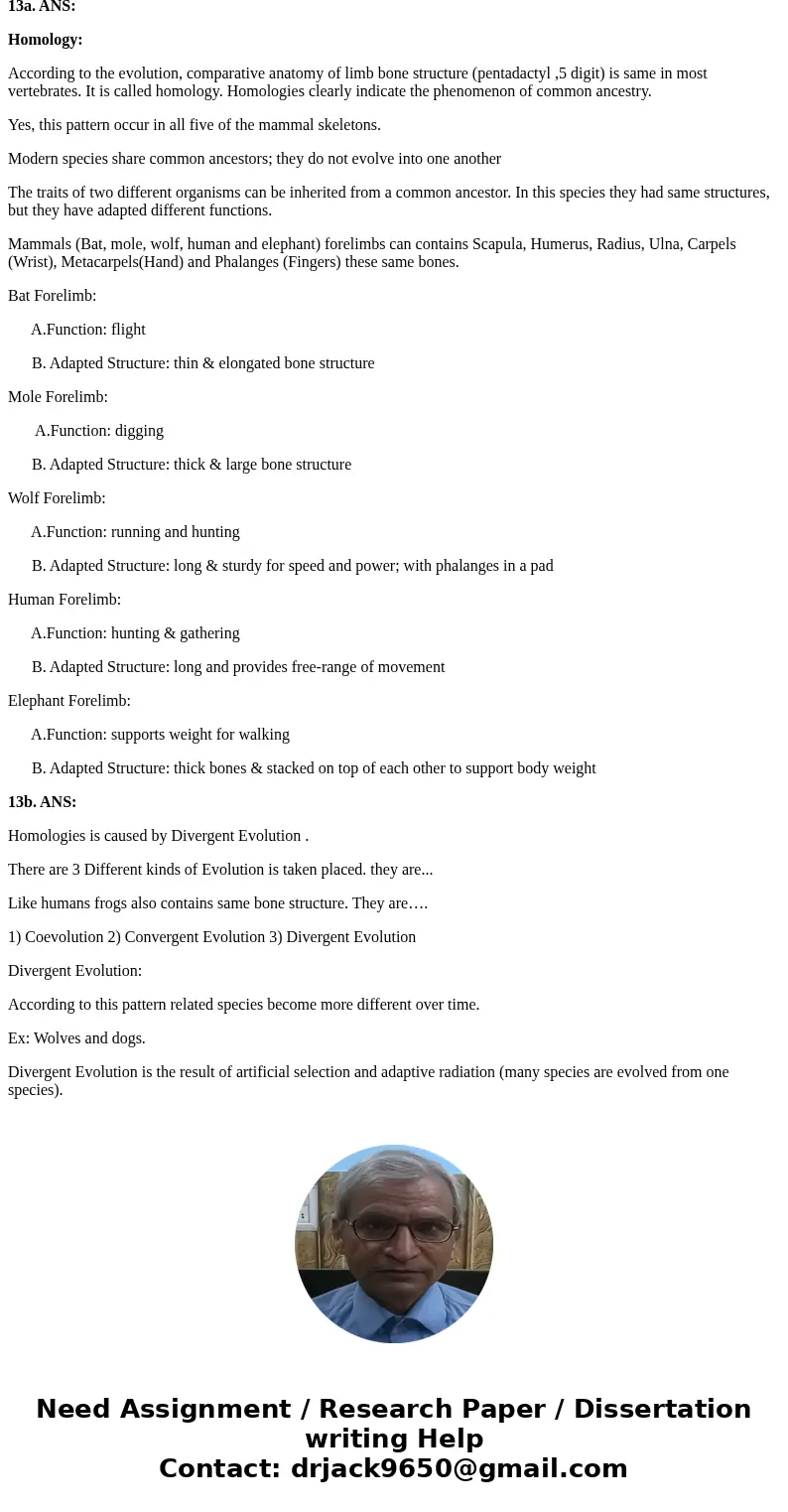One scientist summarized the mammal forelimb by saying Mamma
Solution
13a. ANS:
Homology:
According to the evolution, comparative anatomy of limb bone structure (pentadactyl ,5 digit) is same in most vertebrates. It is called homology. Homologies clearly indicate the phenomenon of common ancestry.
Yes, this pattern occur in all five of the mammal skeletons.
Modern species share common ancestors; they do not evolve into one another
The traits of two different organisms can be inherited from a common ancestor. In this species they had same structures, but they have adapted different functions.
Mammals (Bat, mole, wolf, human and elephant) forelimbs can contains Scapula, Humerus, Radius, Ulna, Carpels (Wrist), Metacarpels(Hand) and Phalanges (Fingers) these same bones.
Bat Forelimb:
A.Function: flight
B. Adapted Structure: thin & elongated bone structure
Mole Forelimb:
A.Function: digging
B. Adapted Structure: thick & large bone structure
Wolf Forelimb:
A.Function: running and hunting
B. Adapted Structure: long & sturdy for speed and power; with phalanges in a pad
Human Forelimb:
A.Function: hunting & gathering
B. Adapted Structure: long and provides free-range of movement
Elephant Forelimb:
A.Function: supports weight for walking
B. Adapted Structure: thick bones & stacked on top of each other to support body weight
13b. ANS:
Homologies is caused by Divergent Evolution .
There are 3 Different kinds of Evolution is taken placed. they are...
Like humans frogs also contains same bone structure. They are….
1) Coevolution 2) Convergent Evolution 3) Divergent Evolution
Divergent Evolution:
According to this pattern related species become more different over time.
Ex: Wolves and dogs.
Divergent Evolution is the result of artificial selection and adaptive radiation (many species are evolved from one species).


 Homework Sourse
Homework Sourse